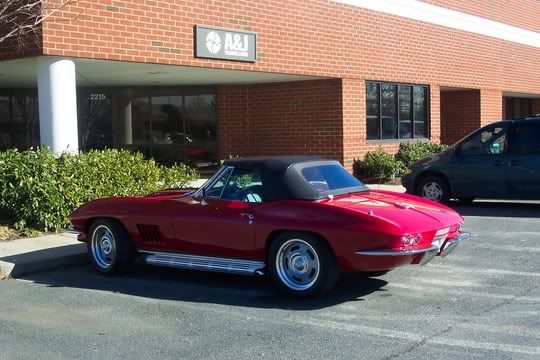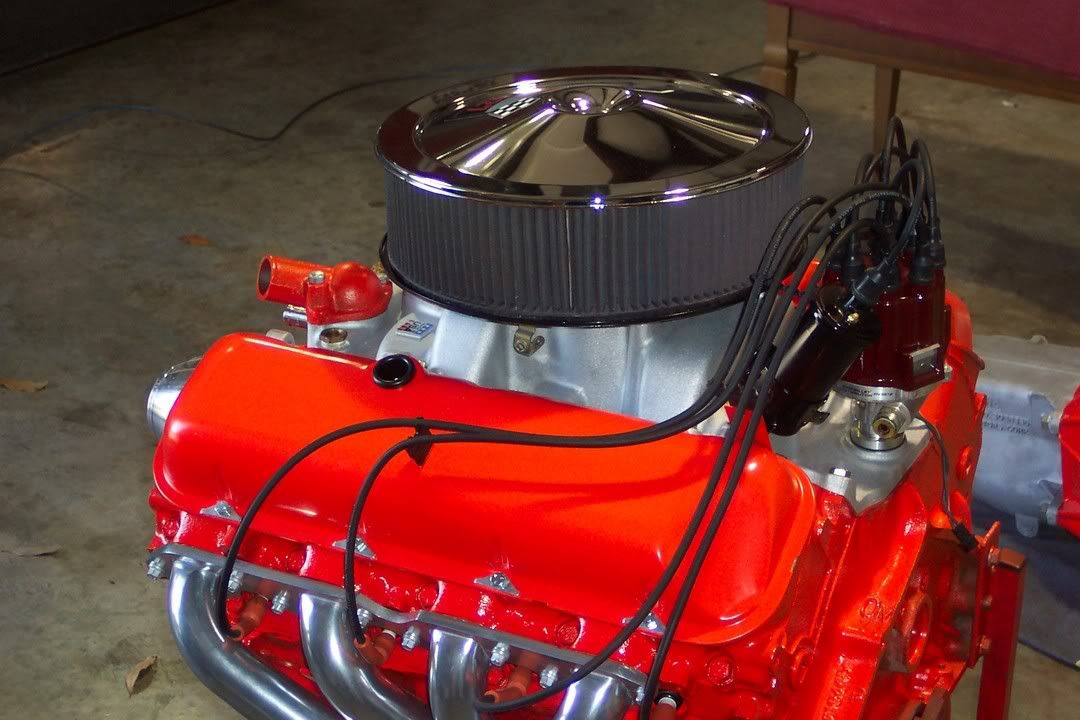sports car
n. An automobile equipped for racing, especially an aerodynamically shaped one-passenger or two-passenger vehicle having a low center of gravity and steering and suspension designed for precise control at high speeds.
var tcdacmd="cc=edu;dt";
 WordNet
Note: click on a word meaning below to see its connections and related words.
WordNet
Note: click on a word meaning below to see its connections and related words. The
noun sport car has one meaning:
Meaning #1: a small low car with a high-powered engine; usually seats two persons
Synonym:
sports car

 Wikipedia
sports car
Wikipedia
sports car

 Honda NSX
Honda NSX sports car

 TVR Tuscan
TVR Tuscan sports car


New style 2005
Ford Mustang


Ruf RGT
A
sports car is type of
automobile designed for sporting performance. While opinions differ as to the exact definition, most sports cars have two seats and two doors, and are designed to excel at a combination of acceleration, top speed, braking, and maneuverability. Great emphasis is often placed on handling—the ability of the car to remain in the control of the driver under challenging condition such as when the car's tires begin to lose their grip on corners.
A car may be
sporting without being a sports car. Performance modifications of regular cars, such as
muscle cars,
hot hatches and the like do not generally fall in the pure sports car territory.
A large, powerful
engine is not required; many of the early British sports cars lacked a powerful engine and did not accelerate as quickly as, say, muscle cars, but were known for having exceptional handling characteristics due to their combination of light weight, carefully engineered/balanced chassis and innovative suspension designs.
Lotus is often cited as an example of this approach. On tight, twisting roads, such a car has higher effective performance than a heavier, more powerful car with less cornering ability.
In many situations, the term "sports car" is used to refer to any car with more power or performance than is typical for cars in general. Often vehicles in the
muscle car, performance sedan/saloon or
grand tourer (GT) category are referred to as sports cars even though they tend to lack the light weight and excellent handling characteristics of a true sports car.
Due to bureaucratic restrictions in the North American market, many sports cars are not available for sale or use in the United States and Canada. In Britain and Europe, a more flexible attitude towards small-volume specialist manufacturers has allowed companies like
TVR,
Noble,
Pagani, etc. to succeed.
Layout
The layout of drive train and engine influences the handling characteristics of a car and is the focus of more attention in a sports car.
Most modern cars use the
FF where the engine is in the front and drives the front wheels. Some sports cars have this layout (e.g. Lotus Elan M100), but due to the limitations of front wheel drive, it is not typical in higher-performance models.
Previously
FR, front engine driving rear wheels, was common. This form has survived longer in sports cars than in the mainstream and is declared by some to be the "classic" layout for sports cars. The lighter rear-end and rear drive increases the ability of a car to "drift" around corners without losing control.
In search of improved handling and weight distribution other formats have been tried.
MR is a layout commonly found only in sports cars—the engine is mounted towards the centre of the chassis, close behind the driver, and powers the rear wheels.
Porsche are the sole users of the
RR layout, a rear engine driving the rear wheels. The qualities of their cars are often said to have come about despite rather than because of this layout. The weight distribution across the wheels in a Porsche cannot be seen as ideal as the weight of the engine is outside the car's wheelbase. This would usually lead to extremely unpredictable handling and, indeed, many of their early Porsches did suffer from this. However, Porsche have continuously refined the design and combined their modifications with electronic driving aids like computerized traction and stabililty control which do much to counteract the inherent flaws of the design. Many of Porsche's techniques have been applied to other cars with success.
One option for transferring the power from the engine to the car's wheels is
all wheel drive or AWD. Athough some early passenger cars used this technique (e.g. 1966
Jensen FF) it did not gain widespread acceptance until the 1980s.
Audi's great
rally racing success with their
Quattro in the early 1980s as well as
Lancia's success with the Delta Integrale legitimized this layout for sports cars. Since then, many of the top-performing cars from marques like
Audi,
Porsche and
Lamborghini, as well as far-east manufacturers like
Mitsubishi,
Subaru and
Nissan, use AWD in performance cars.
Seating
Some sports cars have small
emergency back seats that are really only suitable for luggage or small children. Such a configuration is often referred to as a 2+2 (two full seats + two "occasional" seats). Often these seats are only included to lower insurance premiums.
Over the years, some manufacturers of sports cars have sought to increase the practicality of their vehicles by increasing the seating room.
One method is to place the driver's seat in the center of the car which allows two full-sized passenger seats on each side and slightly behind the driver. The arrangement was originally considered for the
Lamborghini Miura but abandoned as impractical because of the difficulty for the driver to enter/exit the vehicle.
McLaren used the design in their limited-edition supercar the F1 whose performance was so extraordinary that the inconvenience of getting in and out of the car was dismissed by many owners as a minor complaint.
Another British manufacturer,
TVR, took a different approach in their Cerbera model. The interior was designed in such a way that the dashboard on the passenger side swept toward the front of the car which allowed the passenger to sit farther forward than the driver. This gave the rear seat passenger extra room and made the arrangement suitable for three adult passengers and one child seated behind the driver. The arrangement has been referred to by the company as a 3+1.
Examples
Well known specialist
brands or marques, new and old, are:
Almost all major car manufacturers also make some form of high performance car, sometimes very successfully such as
Ford with the
GT40,
Mazda with the
MX-5/Miata, and
Nissan with the
Z-car and
Skyline GT-R.
See also
This entry is from Wikipedia, the leading user-contributed encyclopedia. It may not have been reviewed by professional editors (see
full disclaimer)




















